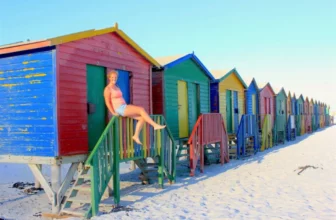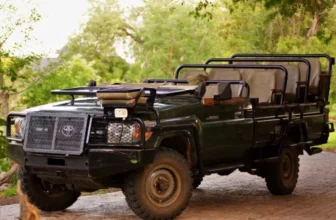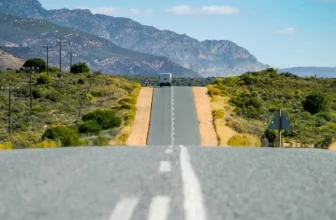Kruger Park is one of South Africa’s most popular national parks. Best known for being home to the Big Five, it draws thousands of people from all over the world. The park provides everything from 5-star to budget-friendly accommodation.
Kruger National Park South Africa – Important Info
Kruger National Park is a popular place for both locals and tourists to experience the beauty of the largest game reserve in Africa.
Where is the Kruger National Park?
The National Park of Kruger encompasses two of the provinces of Mpumalanga and Limpopo
Kruger National Park History
The Kruger National Park was founded under the leadership of Transvaal’s President Paul Kruger in 1898. The area between the rivers Sabie and Crocodile have been marked as a non-hunting zone.
The National Parks Act was proclaimed on 31 May 1926, and the game reserves Sabi and Shingwedzi were merged to create the Kruger National Park. Motorists during this time paid £1 pound entrance fee to the park.
There are a number of ecological plays, paintings and memorable worth visiting for the tourist who is interested in historic life.
Kruger National Park Size
Are you aware that Kruger National Park is the largest game reserve? It stretches 19,633 square kilometers, about the same area as all Israel.
Kruger National Park Animals (approximates)
- Impala – 90 000
- African Buffalo – 27 000
- Zebra -18 000
- Blue Wildebeest – 12 000
- White Rhino – 7 000 – 12 000
- Elephant – 12 000
- Greater Kudu – 6 000
- Greater Kudu – 6 000
- Waterbuck – 5 000
- Giraffe – 5 000
- Hippo – 3 000
- Spotted Hyenas – 2 000
- Lion – 1 500
- Leopard – 1 000
- Bushbuck – 500
- Black Rhino – 350
- African Wild Dog – 300
- Common Eland – 300
- Cheetah – 200
Quick Kruger Park Facts
- Kruger National Park has 11 main gates, the most famous entry point being the southern gates.
- No cars were permitted to enter the park until 1926. Railways, carriage carts, ox wagons, and horseback or pack donkeys were the only means of transportation. Today, all main roads are tarred, while most of the secondary roads, mostly gravel, are kept in good condition.
- Motorists and game enthusiasts were first allowed entry to the Park in 1927 for a fee of one pound.
- There are more than 2 000 species of plants in the Kruger National Park.
- The park is home to the Big 5. Due to a large amount of poaching, all five species are at risk of extinction, despite anti-poaching campaigns around the world.
- The park is home to 517 bird species, including 253 natives and 264 from other nations.
- The rivers of Kruger National Park are home to 49 species of fish.
- The park is also one of the only places in Africa that the critically endangered wild dogs still roam.
- Visitors to the Park are encouraged to follow the speed limits-so as not to scare the animals and respect them in their habitat when they cross the road.
- In the Kruger National Park, there are about 254 documented cultural sites, of which 125 are registered sites of rock art.
- Over 300 Stone Age archaeological sites have been discovered in the park, all §dating back 100 000 to 30 000 years ago.
- Princess Elizabeth and Princess Margaret visited the Park on their royal South African tour and stayed in one of the first luxurious lodges constructed in the park. In 1955, the Park was visited by over 100,000 people every year.
- The roundabouts were constructed in “Selby” style, named after an American mining engineer, Paul Selby at the time, who was on the Kruger National Park management board.
- Perhaps one of the highly respected environmentalists in South Africa and a conservator, Dr. Player led attempts to save the extinction of the southern white rhino. The first trails of the wilderness in 1957 in the Kruger National Park were created by him.
- The Kruger National Park is situated in a subtropical region where hot and humid summer days are often at temperatures up to 100 °F (40 °C).
- The most extreme droughts in Kruger National Park were observed between 1980 and 1997, with the worst being in 1993. The drought in 2024 resulted in the culling of the hippopotamus by park management, which increased public interest.
- A large increase in the number of elephants has put a serious strain on the Park’s ecosystem.
- In the 1980s, the Park experienced extensive poaching of elephants that has since collapsed. According to the Convention on International Trade in Endangered Species of Wild Flora and Fauna (CITES), it retains over 48 tons of ivory in storage and has been allowed to sell 30 tons to collect much-needed revenue for anti-poaching measures.
- More than 650 park guards and a special dog unit make up the Kruger National Park Anti-Poaching team. The team caught more than 680 individuals in 2024, 514 individuals in 2024 and 401 individuals in 2024 as a result of anti-poaching campaigns in South Africa
- Avid golfers can also be found in the park. Guests will enjoy a unique experience on the 9-hole Skukuza golf course. This course is unique because it is not locked in, and roaming wildlife sometimes join golfers.
- While animal attacks are rare, a small number of workers have been killed by wild animals as a result of negligence and failure to obey rules.
- Kruger has six walking trails. Driving is not the only way to get close to the wildlife, but you’re going to need a guide if you want to see them on foot!
- The Kruger National Park’s highest altitude is 840 meters, known as Kandzalive.
- When visiting the Kruger National Park, there is more than 1800 km of paved roads.
- Kruger Park is in the malaria region and visitors are advised to seek malaria vaccines before visiting.
- The speed limit when traveling in Kruger National Park is 50 km / h on tar roads and 40 km / h on dirt roads.
- Kruger National Park has several campsites to fit your needs. The best campsites are Berg en dal rest camp, Crocodile Bridge Rest Camp, Lower Sabie Tented Camp, Maroela Satellite Camp, Balule Satellite Camp, Tsendze Campsite and Punda Maria Rest Camp.
- There are 10 gateways to Kruger National Park: Crocodile Bridge, Paul Kruger, Orpen, Phalaborwa, Malelane, Numbi, Phabeni, Punda Maria, Giriyondo.
Gate Times
Entrance Gates Opening Times:
Oct-Mar: 05:30
Apr – Sep: 06:00
Camp Gates Opening Times:
Oct: 05:30
Nov – Jan: 04:30
Feb – Mar: 05:30
Apr – Sep: 06:00
Camp Gate Closing Times:
Aug – Oct: 18:00
Nov – Feb: 18:30
Mar-Apr: 18:00
May – Jul: 17:30
*Please make sure you have looked at the gate times before you travel to avoid any disappointment.
Summary
The history of the park is as diverse as its animal population with it breathtaking views it’s surely a place you want to visit. There is so much that many visitors can see and learn here that they come back again and again, and they get to know the Kruger in numerous ways.
Visiting Kruger National Park is a life experience for people who love nature and wildlife.
Last updated on October 13th, 2023 at 02:47 pm




